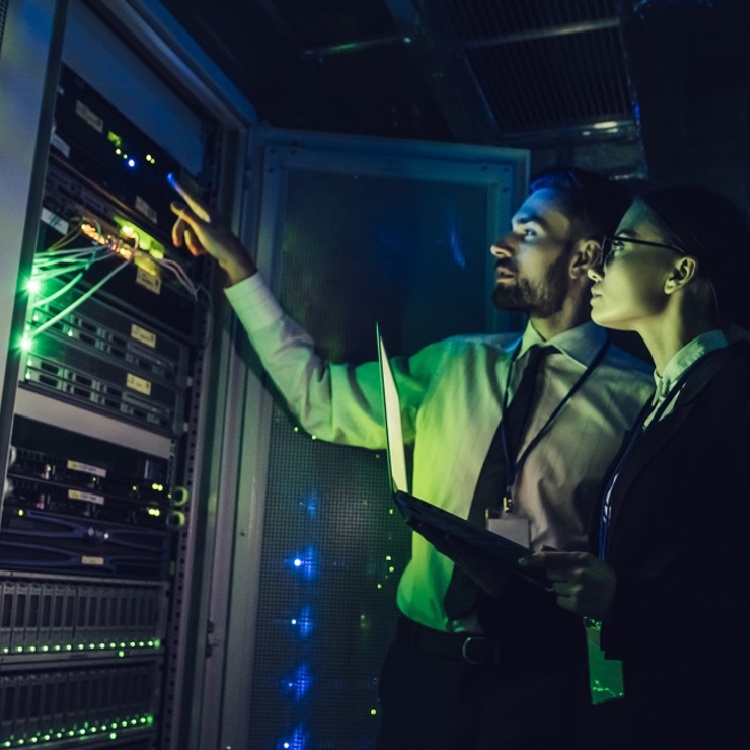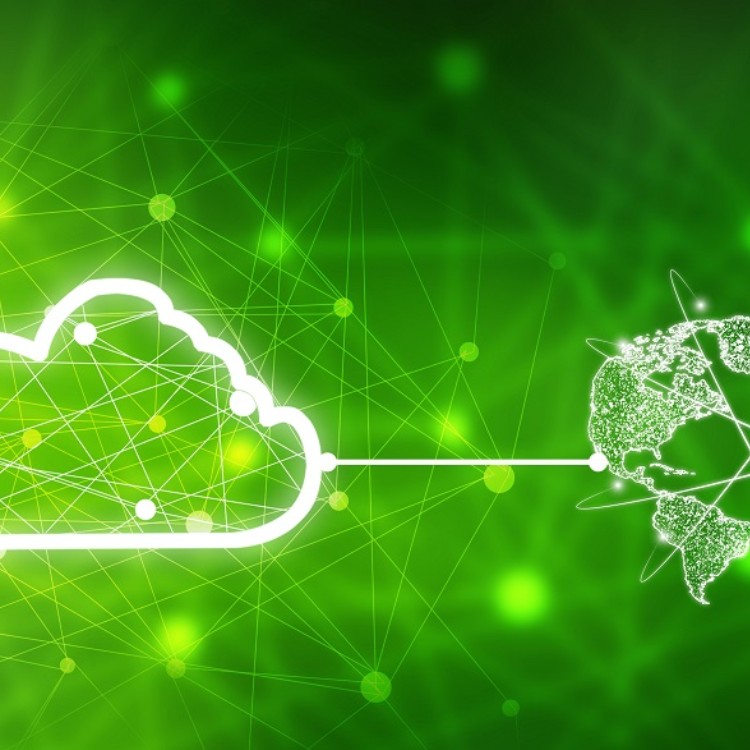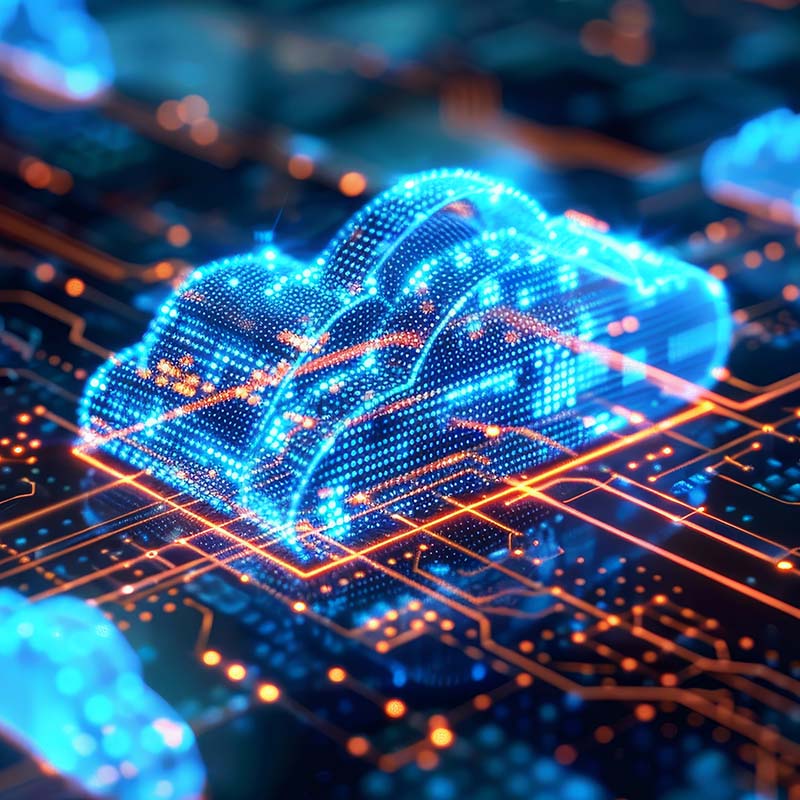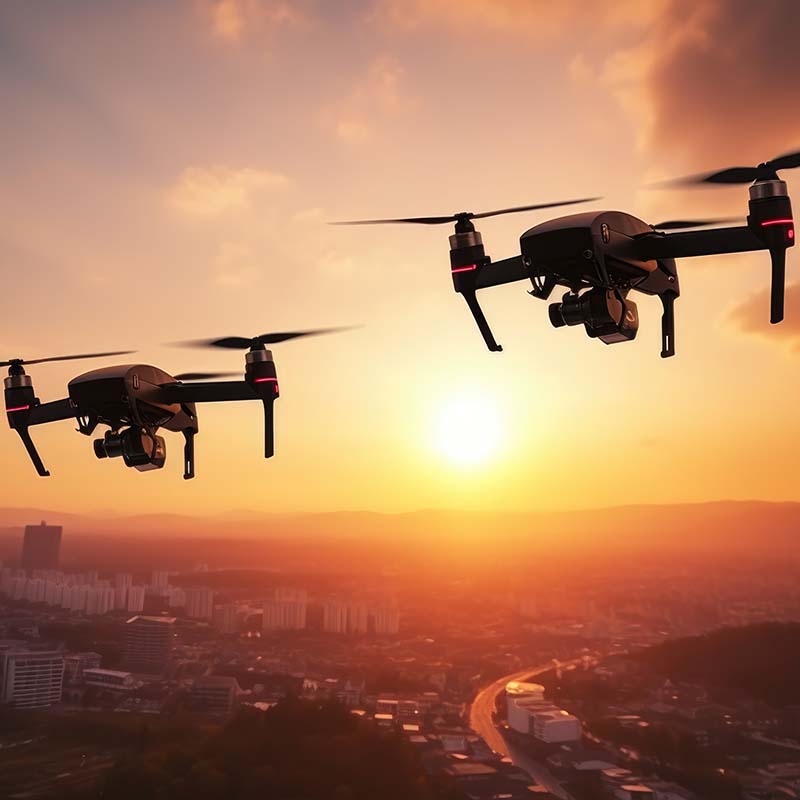Climate change isn’t somebody else’s problem anymore. It just might be a concern for anyone who uses digital technologies.
More professionals in technology are acknowledging how much electricity it takes to power cloud technologies, big data and AI-driven automation. The growing attention and awareness are making IT leaders central to any organization prioritizing and reporting on ESG (environmental, social and governance) efforts.
The data centers and data transmission networks that underpin the world’s digitalization efforts accounted for almost 1% of energy-related greenhouse gas (GHG) emissions, which is 0.6% of total GHG emissions, according to the International Energy Agency (IEA).
The agency pointed out that since 2010, emissions have grown only modestly despite rapidly growing demand for digital services, due to energy efficiency improvements, renewable energy purchases by information and communications technology (ICT) companies and broader decarbonization of electricity grids in many regions. However, the rapid growth in workloads handled by large data centers has resulted in rising energy use in this segment over the past several years, increasing by 10-30% per year.
The IEA warned that significant additional government and industry efforts on energy efficiency, RD&D, and decarbonizing electricity supply and supply chains are necessary to curb energy demand and reduce emissions rapidly over the coming decade to align with the Net Zero by 2050 Scenario.
IT Sustainability Becomes Business Critical
“As leaders in technology, we have an enormous ability to shape this space — and a moral obligation to do so,” said Richard Williams, chief information officer with the European Bank of Reconstruction and Development. Twenty-five years ago, he commanded the Bearer Party of Welsh Guardsmen for Diana Princess of Wales. Today Williams is recognized as one of world’s the Top 100 CIOs.
Williams spoke on a panel titled “Preparing for the Coming ESG-led IT Transformation Wave” held during the November 2022 Gartner IT Symposium in Barcelona, Spain, which brought attracted 7,000 CIOs from around the world eager to learn how talent, energy and security are critical to developing sustainable IT operations.
The Symposium’s main keynote covered “Sustainable Talent” and the need to eliminate dull work, invest in skills needed for the future and support talent with better tools. It also explored the topic of “Sustainable Performance” and the need to make all IT investments a 2-for-1 action, meaning software and hardware purchases meet business and sustainability needs. Optimized IT operations can help enterprises innovate and go on an energy diet.
The other main topic was “Sustainable Security,” which guided CIOs to focus on security outcomes they want to achieve not shiny tools and irresistible vendor offerings. Gartner told the audience that even though these are tough financial times, now is the time to invest in these things to gain a competitive advantage.
Gartner claimed that by the next decade, 10% of the total CO2 emissions reductions could come from digital initiatives led by savvy enterprises around the world. These savvy enterprises will rely on “EMOS” (energy management and optimization system) to measure energy consumption in real-time and gain actionable insights that bring efficiencies. They will go on an “energy diet” by optimizing data center infrastructure.
In his panel, hosted by hybrid multicloud software company Nutanix, Williams cautioned that IT operations burn much more energy than they did in years past, producing far higher greenhouse gas emissions. Indeed, IT-related electricity consumption is expected to have major climate impacts in coming years, which underscored Williams’ plea to his colleagues to put their brains to work on the engineering and technology challenges of our time.
“Let's really start to agitate for technology to do better,” he said. “Because in 10 years, the estimates are we can be using up to 30% of the energy on the planet.”
Environmental, Social and Corporate Governance Measures Drive Digital Transformation
The Gartner forum underscored the growing importance of ESG as corporations face new requirements to disclose climate-related costs and risks, according to Steen Dalgas, a senior cloud economist at Nutanix. He said technology leaders who attended or followed the live event got wake-up call: act now because IT sustainability is essential for the planet and business’ bottom line.
“Most CIOs are just not aware that this is coming and it's transformational,” Dalgas said during the panel with Williams. “This is going to be landing at your desk.”
To understand the impact on IT people, it helps knowing the three scopes of emissions as defined by the Greenhouse Gas Protocol, which has become a leading accounting and reporting standard for greenhouse gas emissions. The GHG Protocol’s Corporate Accounting and Reporting Standard defines each scope as:
- Scope 1: Direct GHG emissions – These occur from sources that are owned or controlled by the company, for example, emissions from combustion in owned or controlled boilers, furnaces, vehicles, etc.; emissions from chemical production in owned or controlled process equipment. Direct CO2 emissions from biomass combustion shall not be included in scope 1 but reported separately.
- Scope 2: Electricity indirect GHG emissions – This accounts for GHG emissions from the generation of purchased electricity consumed by the company. Purchased electricity is defined as electricity that is purchased or otherwise brought into the organizational boundary of the company. Scope 2 emissions physically occur at the facility where electricity is generated.
- Scope 3: Other indirect GHG emissions – this is an optional reporting category that allows for treating all other indirect emissions. Scope 3 emissions are a consequence of the company's activities, but occur from sources not owned or controlled by the company. Some examples of scope 3 activities are extraction and production of purchased materials; transportation of purchased fuels; and use of sold products and services.
Dalgas noted that Scope 2 will be one of the first places corporations look for ways to comply with emerging ESG rules.
“The CFO is going to be knocking on the door of the CIO to put pressure on them to change and reduce emissions,” he said.
Nutanix’s technology speaks directly to Scope 2 ESG challenges confronting corporate IT leaders. The company helped pioneer hyperconverged infrastructure (HCI), which uses software to converge and scale networking, compute and storage functions on commodity hardware.
This software-defined approach is more flexible and simpler to manage than traditional three-tier IT systems. Data centers running on HCI require a smaller hardware footprint than older IT systems. They can also consume significantly less electricity. In a whitepaper, Dalgas noted that Nutanix helped companies with large, complex IT operations reduce their data center footprint. A case study on Manchester City Council’s move from traditional 3-tier IT systems to a modern Nutanix Cloud Platform, so server rack space shrunk by 90% and contributed to an annual saving of £285,000 per annum due to a reduction in power consumption, cooling requirements and rack space compared to their previous IT operations.
Enterprise Cloud installation took just a few days, followed by the migration of 900+ application workloads over a period of 3-4 months, with immediate benefits. For example, along with greater levels of performance and cloud-like scalability, rack occupancy was reduced by 90%. This has contributed to an annual saving of £285k per annum through a significant reduction in power, cooling as well as rack space. The move to Nutanix Enterprise Cloud also supports the city’s ambitious climate change target to become a zero-carbon city by 2038.
Farrington explained that the migration to Nutanix Enterprise Cloud has consolidated and simplified the Council’s data center infrastructure which, in turn, will enable his team to de-risk the planned move to separate colocation facilities later this year.
Speaking to the panel audience, Dalgas said that a decade ago, electricity represented about 10% of the total cost of ownership (TCO) for corporate technologies. Now, electricity is about 40% of TCO — the single biggest IT cost. This presents an opportunity that HCI can help support on-prem, public cloud and hybrid multicloud environments.
Public cloud providers, for instance, often claim they are sustainable because they operate at such an enormous scale. But they still generate huge energy demand and considerable greenhouse gas emissions. Dalgas said the cloud economists at Nutanix have figured out how to help their clients reduce their contributions to public-cloud emissions.
“We think we can bring those emissions down by as much as 35%,” Dalgas said, citing the 2021 Nutanix ESG report. That can help companies meet industry standards and their own ESG goals.
Data Centers as IT Energy Consumption Cost Centers
In the Gartner forum, Avinash Shetty, Nutanix’s vice president of product management, remembered the first time a customer asked him about the energy his technology solution consumed.
“I literally had a deer-in-the-headlights kind of moment,” he recalled. While he felt unprepared to answer that question a few years ago, he now has answers for ESG-related queries.
“How do I get energy consumption low? Well, I have to power less things to begin with,” Shetty said.
Reducing corporate inventory of servers, switches and storage arrays also streamlines IT operations, making it easier to measure energy consumption, he added. This also pays off in moving toward ESG-related compliance.
Shetty suggested that using renewables like wind and solar doesn’t necessarily reduce obligations to cut energy output in the data center. After all, a conventional data center needs massive volumes of electricity.
“Yes, I'm using renewable resources, but I'm still consuming a lot, which means I'm not necessarily running my data center as efficiently as I could be,” Shetty said.
Investing in Reducing IT Emissions
Williams, the CIO at European Bank of Reconstruction and Development, encouraged IT leaders to widen their lens when looking for energy-saving opportunities. He recalled a recent move to a new corporate headquarters and that a familiar request came up: people wanted dual monitors for their desktop PCs.
It might seem like a trivial concern. How much difference would there be in the energy consumption of two small screens vs. one big one? A single user’s desktop might have only a small difference in energy consumption. But an organization with thousands of users could generate substantial savings by choosing the more energy-efficient option.
Williams said the difference between giving everybody one big screen or two smaller ones was roughly equal to the energy cost of driving a V-8 Range Rover about a million kilometers (621,00 miles) over three years. (If you don’t have a calculator handy: At 18 miles per gallon, an SUV would burn 34,500 gallons of fuel in 621,000 miles, costing $103,500 at $3/gallon).
“All of those decisions matter and we have to start making them now,” he said.
While many details still must be worked out, the accuracy of ESG-related emissions estimates are sure to be questioned along the way. Williams said the best way forward for technology leaders is to replace words with deeds and reduce IT energy consumption as soon as possible.
“If you sit there waiting for the regulator to say something…if you sit there waiting for the most accurate measure to come up, then we are actually collectively voting for a catastrophe.”
Tom Mangan is a contributing writer. He is a veteran B2B technology writer and editor, specializing in cloud computing and digital transformation. Contact him on his website or LinkedIn.
© 2023 Nutanix, Inc. All rights reserved. For additional legal information, please go here.

















